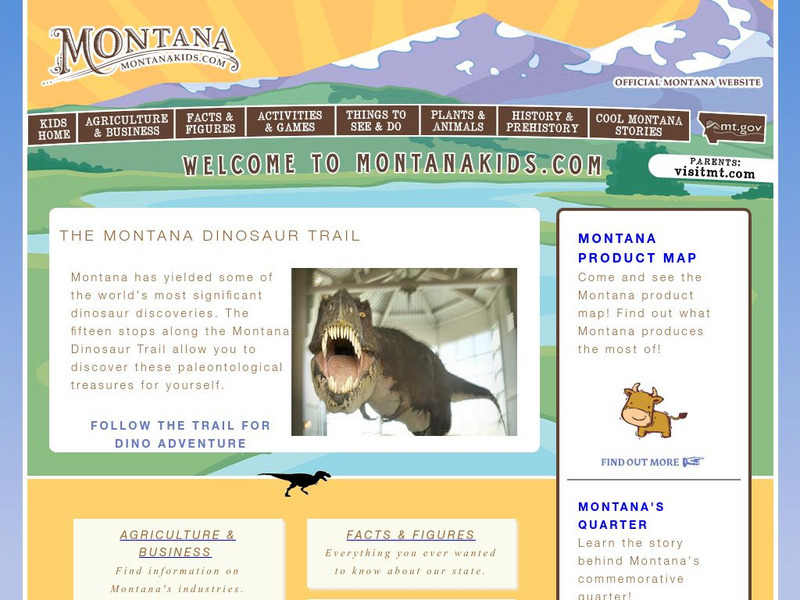Montana State University
Everest Extremes: Biodiversity
How many animals can live in a climate as cold as Mount Everest's? Find out with a science lesson all about biodiversity. Activities include research, presentations, group work, coloring maps, and a simulation of a food web.
Curated OER
Amazing Grazing: Keeping Our Ecosystem Running
Students discover the value of sustainability within our ecosystem. In this ecological lesson, students discuss the importance of a food cycle in our society, and how humans can improve the conservation of a healthy ecosystem. Eventually...
Curated OER
Edible Soil
Students model the soils layers using Oreo's. In this lesson students use their favorite food items to create a model of soil layers. A discovery lesson from a youth camp is adapted for classroom modeling and discussion of soil...
Curated OER
"Web of Life" Game
Students relate members of an ecosystem by their interactions. In this ecosystem lesson, students toss a ball to other members of their group (each representing a member of an ecosystem) and tell how they are related to that member....
Curated OER
World Hunger - A Cultural Crisis
Learners explore the problem of world hunger and starvation. After a class discussion, students use a map to identify specific areas where populations are starving. In groups, learners research reasons for the lack of food. They prepare...
Curated OER
Ecotourism in National Parks and Wilderness
Students develop a plan for ecotourism after researching a nearby national park or wild area.
Montana Natural History Center
Studying Grassland Ecosystems
At first glance, grassland ecosystems might seem dull and uninteresting, but once you start to explore it's amazing the things you'll find! Through this series of engaging lessons, activities, and experiments, elementary students examine...
Agriculture in the Classroom
Design 'Y'er Genes
How do changes in DNA affect an organism? Scholars explore chromosomes, genes, DNA, and mutations by modeling the DNA of a strawberry. They build a DNA model, then manipulate it to show how changing the genes transforms the strawberry...
Curated OER
Biodiversity on Ninepipe Reservoir
Sixth graders complete a unit about the biodiversity at the Ninepipe National Wildlife Refuge. They view a video, conduct an interview with a tribal wildlife biologist and a federal wildlife biologist and compare the two, collect and...
Curated OER
Non Native Species: English Ivy-Landscape Plant or Deadly Killer?
Students examine an area overrun by English Ivy. They explore how invasive species affect an ecosystem. They also study about the lack of biodiversity and how to measure it out in the field.
Curated OER
Landfills: A Solid Waste Management Plan
Students are able to list the types of household waste that they produce daily. They are able to describe some other types of waste that are produced by industry or agriculture to help maintain their lifestyles. Students are able to...
Curated OER
American Indian Flute and Math
Students investigate the Math behind Musical instruments in this cross-curricular Math lesson on the Native American Flute and waveforms. The lesson can be accomplished in 6 days and includes an extensive materials list for successful...
Curated OER
Hypothermia: Temperature Changes Under Varying Conditions
Students conduct an experiment to determine what type of clothing would be most suitable for outdoor activities. They determine the temperature changes of the skin under various wet clothing materials and graph the temperature changes. ...
Curated OER
Mammals: Mammals and Their Ways
Students study the difference between innate and learned behaviors. They observe the adaptations and behaviors of mammals in this series of lessons.
Curated OER
Time, Talent, Treasure, and Economics
Students examine and trace the origin of an item of clothing. They write, illustrate, and publish a book describing the trade flow that brought their item of clothing to the United States.
Curated OER
How Does Climate Influence Civilization
Middle schoolers demonstrate their knowledge of the Earth's systems. In this climate lesson students identify the climate of a chosen area and the effects it has on the lifestyles of those living there.
Curated OER
Geology in the News
Students discover the underlying scientific principles in common, daily events.
Curated OER
Adapted to Fire
Fourth graders explore forest species' adaptations to fire by participating in a scavenger hunt and mapping a burned forest. Students create maps and explore how indigenous species adapted to living with fire.
Other
Natural Resource Information Center: Maps of Montana
Resource contains 14 different maps of Montana in four different formats. Maps range anywhere from the county maps to the Indian reservation maps.
Other
Natural Resource Information Center: Maps of Montana
Resource contains 14 different maps of Montana in four different formats. Maps range anywhere from the county maps to the Indian reservation maps.
Agriculture in the Classroom
National Agriculture in the Classroom: A Look at Montana Agriculture [Pdf]
What a terrific site to learn about a variety of aspects of the agricultural industry. You will find bulleted facts on the Montana climate, soil, crops, and animals.
Other
Montana's Official Website: Montana Is for Kids
MONTANA KIDS highlights facts about Montana, presents information about the state's history, natural resources, and tourist attractions. It includes games and activities to do when finished exploring this site.
NSTATE
The Geography of Montana
Here you will find a variety of facts about the geography of the state of Montana. Find out the geographic center, total area, elevations and much more.
Johns Hopkins University
The Johns Hopkins University: Montana State Maps
At this site from The Johns Hopkins University Applied Physics Laboratory, you can learn more about the topography of Montana through this informative website. These maps are extremely detailed.





















